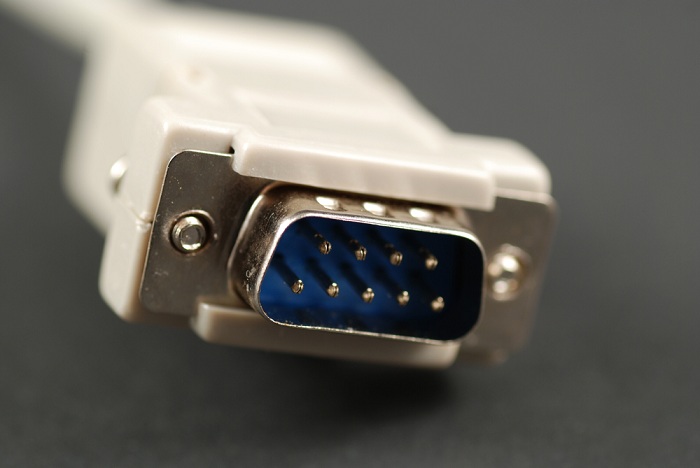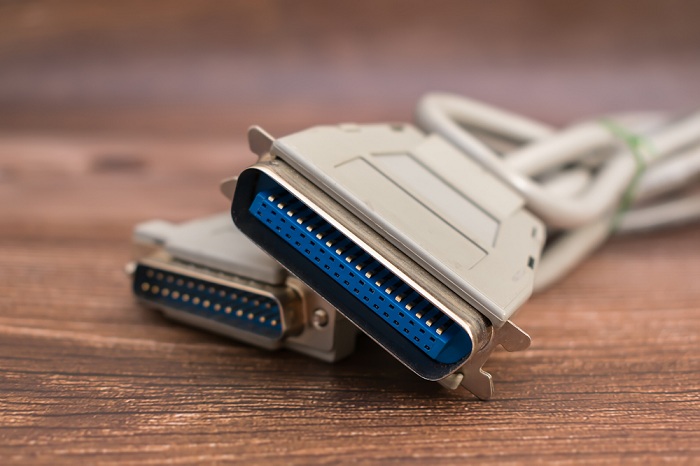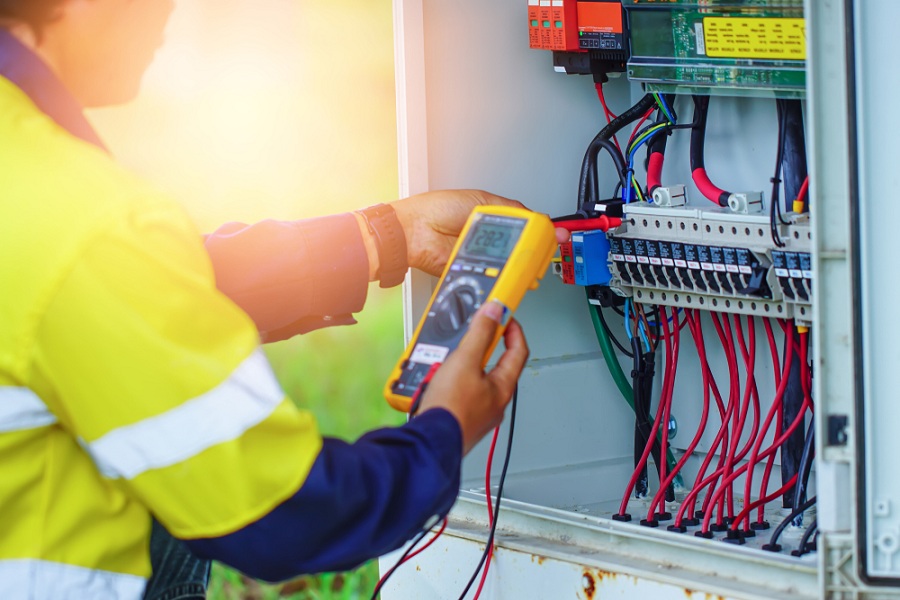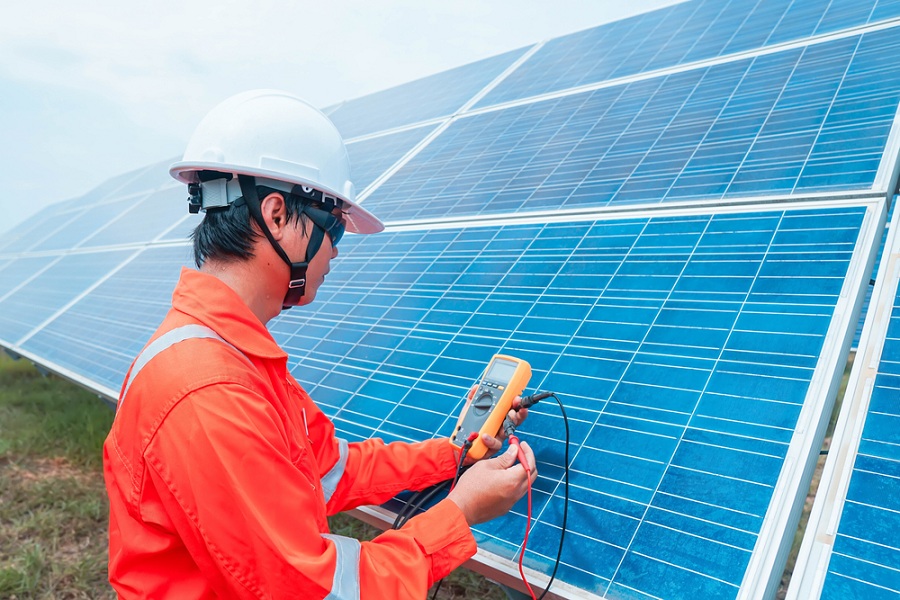Photons from the sun are used to produce DC electricity using solar cells. Solar panels convert sunlight into electricity. Current flows from a solar panel connected to an electric circuit.
Most solar panels produce around 5-20 amps. They are usually rated in Watts. Watt hours are defined as the amount of energy produced per hour.
The number of amps of electricity generated by a solar panel depends on the solar panel's power, the amount of sunlight falling on the panel, and the characteristics of any electrical loads connected to the panel.
Look at the backside of the panel to see its maximum wattage rating. Consult the installation instructions if necessary. Find the maximum power voltage (Vmp), measured in Volts.
To calculate the amperage (amps) from the wattage (watts), divide the number of watts by the number of volts.
If the solar panel has a rating of 250 W and its maximum output voltage is 27.6V, calculate the current using the formula: 250W/23.6V = 9.05A. This is the current the solar panels generate when they're producing maximum power.
Why Amps Matter When Choosing a Solar Panel

A solar battery bank stores the energy generated by your solar panel system. These batteries are typically lithium-ion batteries.
Connecting your solar panel system to your battery bank can charge your devices using the stored energy.
Also, the size of your solar panel system determines the number of amps needed to charge your battery bank fully.
You should know how much current you want before you buy anything. A good rule of thumb is always to have twice as much capacity as you think you'll ever use.
For example, if you have a 10 amp solar panel system, you would need a 20 amp battery bank to charge your device fully.
This is why choosing a solar panel system based on your needs is important. For example, a smaller solar panel system may be sufficient if you don't need to charge multiple devices simultaneously.
Do Solar Panels Send More Amps To Your Battery Charger and Inverter Than They Can Handle?
The solar panel is a current source. The battery is a voltage source. If the solar panel produces enough current, it will charge the battery.
When the battery is fully charged, the solar panel stops producing current. This is called "solar saturation."
At this point, you have no power from the solar panel. You are now dependent on the battery bank.
Different Ways to Connect Solar Panels
Serial Connections

When connecting solar panels together using serial connections, the first panel receives full voltage, while the last receives no voltage. Serial connections provide the highest amp output.
Parallel Connections

When connecting panels together using parallel connections, the first panel gets half the voltage, while the last gets none. Parallel connections provide the lowest amp output.
So what should you choose?
Well, it depends on your needs. If you're installing a system for off-grid use, you probably won't care too much about the difference between serial and parallel connections.
However, if you plan on running your batteries back into the grid, you'll want to select the connection method that provides the highest amp output.
For example, you'll want a serial connection if you plan on charging your batteries back into the utility grid. On the other hand, if you plan on powering your house entirely from the solar array, you'll want a parallel connection.
Let's say that you decide to go with a triple-string system. You'll want to connect all three strings in parallel to maximize your savings.
Doing so will give you the highest amp output. But, if you were to connect the strings serially, you'd only receive half the amp output.
This is where things get interesting. The higher the amp output, the faster your battery bank charges.
And since you'll be charging your batteries back into your utility grid, you'll need to charge them fast.
But, if you connect your strings serially, you'll be wasting energy. Why? Because you'll spend half the amps back into the grid instead of 100% of the amps.
Most Common Amp Ratings Of Modern Solar panels: 100W, 200W, 300W, 400W
As mentioned above, the formula for amps calculation is as below:
amps = watts / volts
Based on this formula, the list of the most common Amp ratings of modern solar panels at 100% output under ideal conditions is below. We already know the power i.e. 100w, 200w, 300w, and 400w and we consider a 12v circuit.
Output(w/12v) | Amps |
(100w) / (12v) | 8.33 amps |
(200w) / (12v) | 16.67 amps |
(300w) / (12 v) | 25 amps |
400w / (12 v) | 33.33 amps |
Final Thoughts

Output from a solar cell depends on its size and the efficiency of its PV cells. The efficiency of solar panels depends on factors including insulation, temperature, shade, and orientation. An ideal 250- to 400- watt solar panel can generate between 14 and 24 amperes.
Storing these amps inside a solar battery will allow you to regulate and store solar energy better. It can power several electrical devices, including refrigerators, air conditioners, and small electronics.
To save money and effectively use your solar panels, reduce overall electricity consumption, replace incandescent bulbs with LEDs, sync high-consuming appliances with solar panels, and turn off unused electrical outlets.
Declining costs, increasing multi-level customer service, and greater global investment and innovation indicate an accelerating drive toward sustainable clean energy.
If you are considering installing a solar panel system for your house, check out our buying guide to learn How Many Solar Batteries Are Needed To Power A House?


